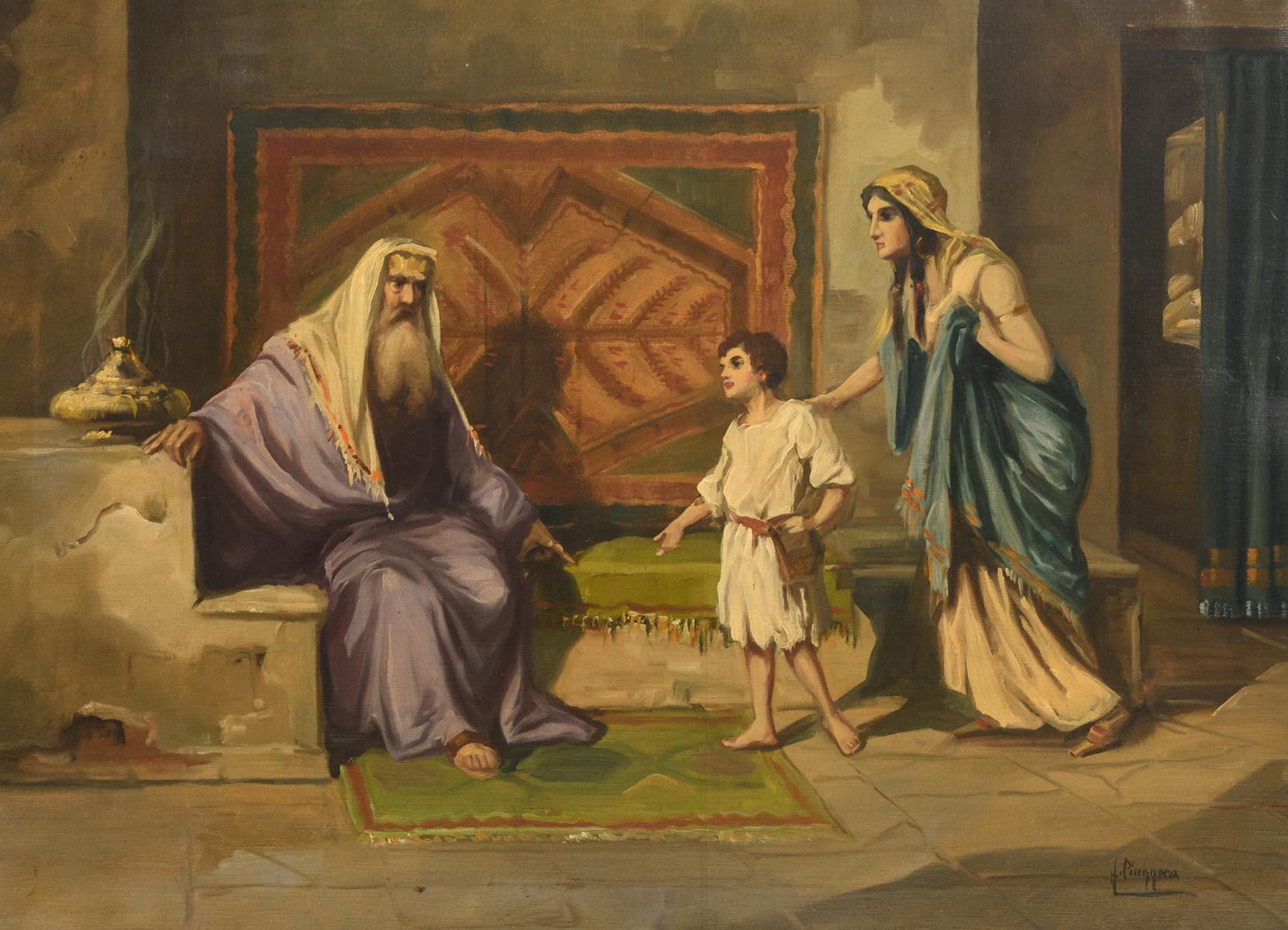The word sacrifice bears the deepest paradox of human and Divine exchange. Its origin is Latin: sacrum facere, to make sacred. To sacrifice is to consecrate, to take what belongs to the sphere of the human and deliver it to the sphere of the Divine. The act is double: it empties and it fills, it wounds and it heals. Sacrifice is transfiguration. It is the movement by which what is common is set apart, lifted into a different order of meaning. In this sense sacrifice is the key to liturgy itself, since liturgy is nothing but the rhythm of making Sacred the passing gestures of life.
The ancient stories preserve this truth in the figure of Hannah who, having longed for a child, finally receives him and then yields him to the Temple. In that act she shows the law of sacrifice with greater clarity than a thousand sermons. What is most desired becomes gift and in the giving it is magnified. Sacrifice is more than a relic of archaic religion but the very structure of existence. All that is born must be offered; all that flows must return. To understand this movement is to begin to live liturgically, perceiving each act as altar.
I. The Etymology of Sacrifice
The Latin sacer denotes what is cut off from ordinary use, belonging to the gods. Facere is the verb to make or to do. To sacrifice is to enact separation and consecration. The word never meant destruction in its essence. To burn, to slay, to pour, to lift bread or wine were all forms of facere that shifted the object from human possession into Divine relation. The fire transfigured. The smoke ascended as sign that the visible had become invisible.
This movement reflects an older pattern. In the Hebrew tradition, the word korban derives from the root karov, to draw near. Sacrifice is approach. The animal or the grain is not primarily about loss; it becomes the bridge by which the worshipper enters communion with the Holy. The Christian mystery of the Cross reveals this at the highest point: the offering of the body becomes the passage into resurrection. To sacrifice is to render the finite transparent to the infinite.
When sacrifice is reduced to the language of destruction, it becomes sterile. When it is understood as making Sacred, it opens a vision where even the smallest act can carry weight eternal. To eat, to drink, to speak, to desire, all can be taken into the liturgy of sacrifice when made conscious.
II. Hannah and the Offering of Samuel
The figure of Hannah crystallises this truth. Her womb was closed, her rival mocked her, her lips trembled with prayer. When she welcomed the son for whom she had prayed, she returned him to the place of Presence, the sanctuary at Silo, where the Ark of the Covenant rested. This act of yielding is sacrifice in its purest sense: the most intimate fruit is placed upon the altar.
By yielding her son, she magnifies him. Samuel grows in the temple, clothed in the smallest ephod, and becomes prophet, judge, and voice of Israel. The fruit of sacrifice multiplies, whereas what is withheld withers. The paradox is revealed: the barren becomes mother, the mother becomes giver, and the gift becomes prophet.
This gesture also reveals that sacrifice is more than ritual animals or incense. It is about what we most desire and cherish. Hannah embodies the truth that to live sacrificially is to understand that even the child of promise belongs first to God. Her story speaks to the universal law: nothing we generate is ultimately ours. This law is hard, but it is the way the finite opens to the infinite.
III. The Liturgical Life
To live liturgically is to accept that sacrifice permeates all existence. It is not confined to sanctuary walls, it is the rhythm of the world. The sun burns itself to give light. The earth yields its fruit and is ploughed again. The human body breathes in and breathes out, never keeping. The very structure of life is sacrificial. What we mistake as possession is always already gift in transit.
The liturgical life begins when this is embraced as consecration. To drink becomes thanksgiving. To labour becomes offering. To speak becomes prayer. The body itself becomes altar, its acts transformed into oblations of desire and gratitude. Sacrifice is the interpretation of what already occurs.
In this sense the whole cosmos is temple. The sanctuary of Silo, the temple of Jerusalem, the basilica or the mosque are figures of a deeper truth: existence itself is woven liturgy.
Fiat Lux.
